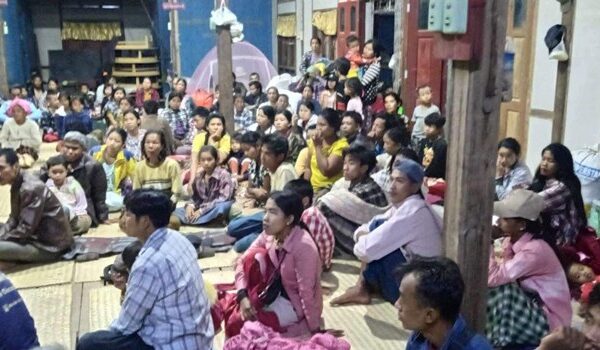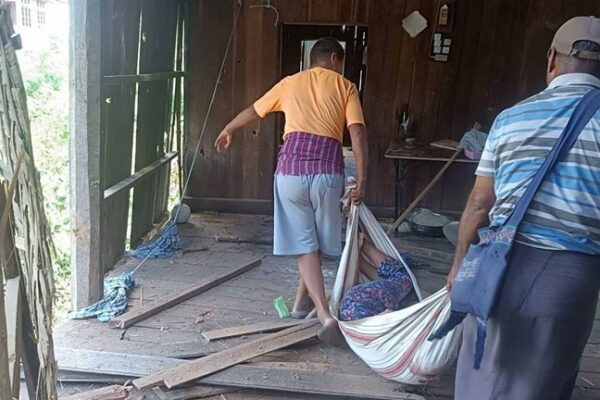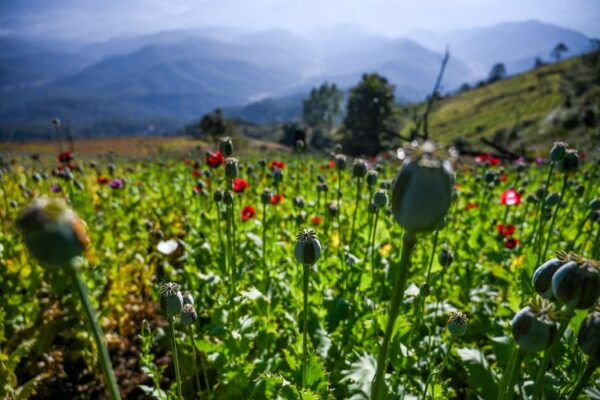Fighting across western Myanmar kills 4 and displaces 45,000
At least three battles raged between Myanmar’s junta and the Arakan Army across three western townships on Wednesday, locals told Radio Free Asia. One civilian died during attacks on Wednesday and three others were injured across Rakhine state’s Minbya and Kyauktaw townships, with 25,000 people forced to flee, residents said. The injuries and death occurred when heavy artillery from the junta landed in Kyauktaw township’s Ah Pauk Wa village. Dak Maung, a man from Ah Pauk Wa, died instantly, while three others, including Ah Tun Che, Aung Tun Mya and Aung Mya Thar, were injured, locals said. On Wednesday, a Kyauktaw-based junta artillery battalion shelled the village with heavy weapons at random, a resident who wished to remain anonymous for security reasons told RFA. “They started shooting around 4:30 a.m. More than 10 heavy shells were fired by Battalion 377,” he said. “They shot at the village although there was no fight.” Almost all 5,000 people from Ah Pauk Wa have fled to safety, he added. Fighting in Minbya township’s capital, Minbya town, also continued into Wednesday after raging through the night, residents said. Villagers said they learned that the Arakan Army initiated the attack by firing at military camps in Minbya on Tuesday evening. The army retaliated on the ground and by air using fighter jets. “We have been hearing the sounds of heavy artillery being fired since Tuesday evening. This morning we heard the sound of small arms being exchanged,” said one resident on Wednesday, declining to be named for fear of reprisals. “We came to know that the Arakan Army has attacked military battalions 379, 380 and 541 at a junta camp in Minbya’s Kyein Taung. Two jet fighters are shooting now.” More than 20,000 residents from Minbya and nearby villages have fled to safety due to the battles, locals said. Some local residents were injured by the junta’s shelling, but details regarding injuries and casualties have not been released about this attack yet. However, to Minbya’s north, at least 15 junta soldiers were killed in a battle between the Arakan Army and regime soldiers, according to a statement released by the Arakan Army Tuesday night. In Rakhine’s Mrauk-U, fighting erupted on Tuesday and junta soldiers from infantry battalion 540 captured three civilians. While walking into the city of Mrauk-U, soldiers shot the civilians and killed them, the statement added. RFA contacted Arakan Army spokesperson Khaing Thukha for further details on the battles in Kyauktaw, Mrauk-U, and Minbya townships, but did receive a response by the time of publication. Calls to Rakhine state’s junta spokesperson Hla Thein by RFA also went unanswered. Fighting in Rakhine during the last two months has intensified, resulting in more civilian deaths each day, residents told RFA. According to data compiled by RFA, 55 civilians have been killed and more than 140 have been injured when fighting resumed after a year-long ceasefire from Nov. 13, 2023 to Wednesday. Translated by RFA Burmese. Edited by Mike Firn.







